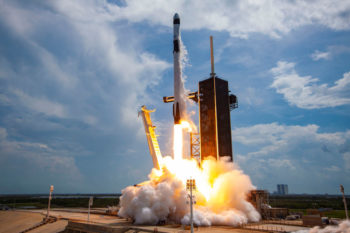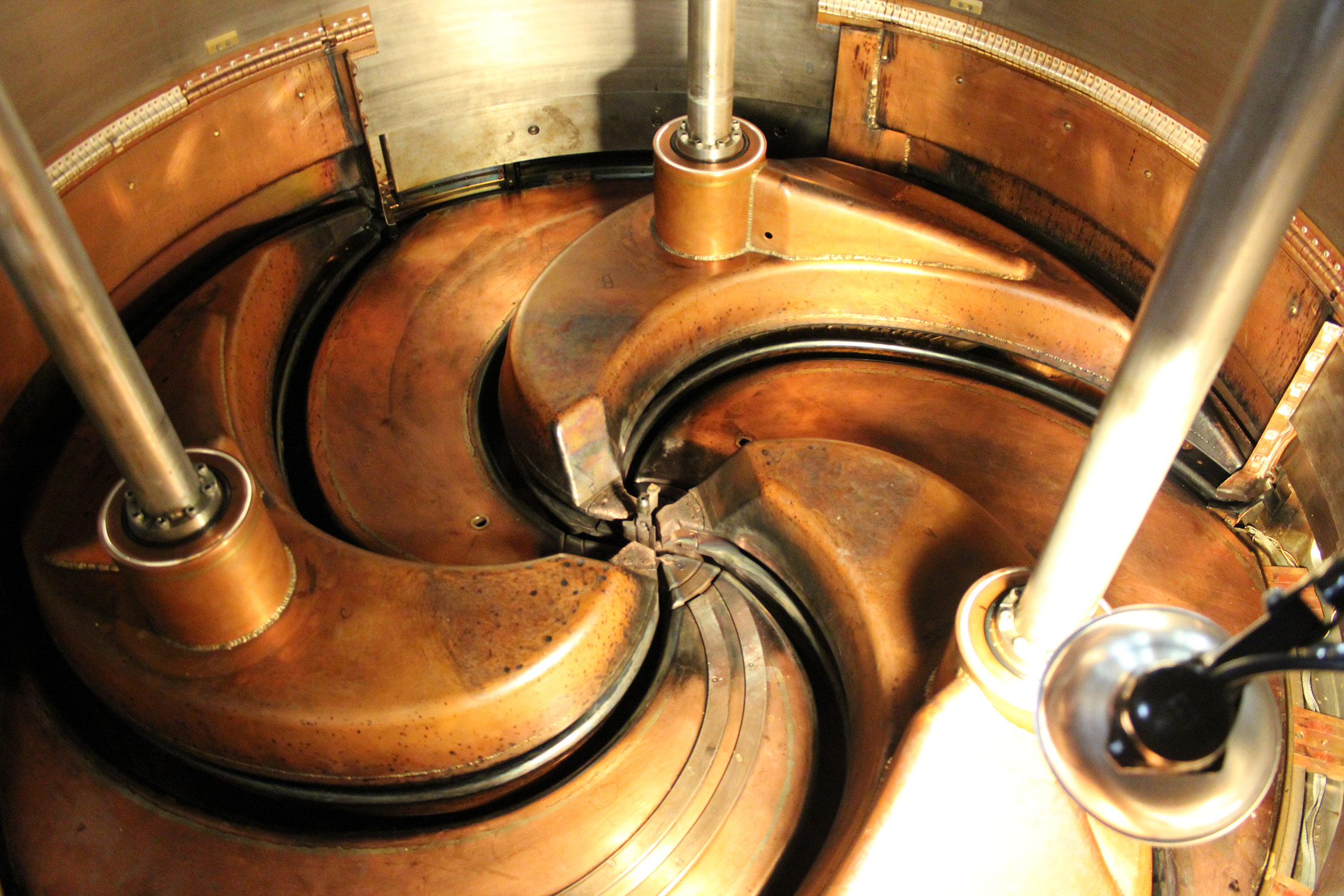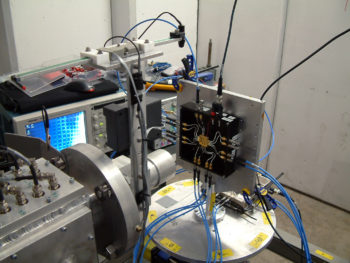
Texas A&M Cyclotron Institute Provides Radiation Effects Testing For SpaceX Crew Dragon Capsule

For scientists at Texas A&M University, the sky has never been a limit.
On Aug. 2, SpaceX’s Crew Dragon capsule landed safely in the Gulf of Mexico off the Florida coast, a little more than two months after making history as the first crewed spacecraft to lift off from American soil since 2011. And while space enthusiasts everywhere are celebrating a new era of spaceflight, so too are researchers at the Texas A&M Cyclotron Institute — a celebration heightened by their pivotal behind-the-scenes role that proved key to the momentous event.
During the past three years, nearly 100 electronic components of the Crew Dragon capsule were tested at the Cyclotron Institute’s Radiation Effects Facility in preparation for the capsule’s trip to space. Because the sun and cosmos are ever-emitting sources of harsh radiation, aerospace equipment must be thoroughly tested before leaving the Earth’s atmosphere.
“As the eyes of the nation were on the launch of Dragon, I felt a great deal of Aggie pride, knowing that the Texas A&M Cyclotron Institute played an important role in this historic event,” said Texas A&M Regents Professor of Chemistry and Cyclotron Institute Director Sherry J. Yennello.
The Crew Dragon, which launched May 30 atop SpaceX’s Falcon 9 rocket from NASA’s historic Pad 39A at Kennedy Space Center in Cape Canaveral, Florida, delivered veteran NASA astronauts Bob Behnken and Doug Hurley to the International Space Station (ISS) as part of a test flight to gauge the spacecraft’s suitability for human space travel. The mission, called Demo-2, marks the first time a private company has put humans into orbit and is a major milestone in SpaceX’s ultimate quest for commercial space tourism.
Henry L. Clark, an accelerator physicist and facility supervisor for the Cyclotron Institute, notes that the added element of an astronaut crew meant that the Crew Dragon had to be tested at a much higher level.
“Because we here at the Cyclotron Institute are able to create the same radiation that exists in space with our accelerators, companies like SpaceX can test the electronics on their vehicles here before ever sending them into space,” Clark said. “It’s very exciting to see that Texas A&M is contributing to this national effort through SpaceX to enable the next generation of space exploration.”

Our reputation with SpaceX and other aerospace agencies is really quite high. Between a can-do attitude, Texas A&M values and doing whatever it takes to get the job done, we want to ensure that our clients are doing the absolute best testing that they possibly can.
The main issue electronics face with space radiation is called single-event effect (SEE), which occurs when a single high-energy particle infiltrates an integrated circuit and causes corruption or even permanent damage. As electronic devices have gotten smaller in the digital age of component miniaturization, Clark says they also have become more sensitive to radiation. SEE testing helps clients take some of the guesswork out of how their new technology will perform in the harsh environment of outer space before the equipment is actually launched.
While such precautions potentially save these companies — and, in many cases, U.S. taxpayers — from considerable financial loss, Clark notes the task takes on an added degree of significance when there are human lives at stake.
SpaceX’s own innovation in designing Crew Dragon’s command module created additional challenges for the Cyclotron Institute testing team. Unlike their predecessors who flew aboard the retired Space Shuttle and Apollo spacecrafts that utilized mostly analog control systems, the astronauts of Crew Dragon are able to operate the capsule almost entirely using three large touch-screen panels similar to an iPad. The trade-off of having a more modern, sleeker system, however, is one which requires that much more examination to prove its ability to withstand radiation.

“The interface of all of those electronics from that touchpad screen has to work, so they brought all of the electrical components they considered to be the most critical in terms of making sure that capsule survived its launch and the astronauts aboard were safe,” Clark said.
The Cyclotron Institute has been studying nuclear reactions even before the historic 1969 Apollo 11 moon landing — specifically, since 1967, when researchers at the facility achieved its first accelerated particle beam using a K150 cyclotron. In 1987, a K500 cyclotron was added, and by the mid-1990s, the institute had established itself as the premiere radiation effects testing facility in the country, with clients like Blue Origin, Boeing, Lockheed Martin Corp. and NASA all vying for beam time.
“Our reputation with SpaceX and other aerospace agencies is really quite high,” Clark said. “Between a can-do attitude, Texas A&M values and doing whatever it takes to get the job done, we want to ensure that our clients are doing the absolute best testing that they possibly can.”
Clark was one of the tens of millions of viewers who tuned in to watch the Demo-2 mission take flight. While many wondered how the astronauts would fare in the new state-of-the-art capsule and how well it would withstand the violent reentry into the Earth’s atmosphere, Clark says he was confident in Crew Dragon’s abilities.
In fact, he’s eagerly awaiting its performance when SpaceX launches the first of its operational missions. The Crew-1 mission that will deploy four astronauts for a six-month stay at the ISS aboard a brand-new Crew Dragon in mid-September, followed by the Crew-2 mission which will send four additional astronauts for another six-month expedition in spring 2021.
“Am I concerned the electronics or the capsule will fail the astronauts? Absolutely not,” Clark said. “We have the best facility in the world for that kind of testing, and that’s one of the reasons SpaceX decided to test here. The fact that Texas A&M was involved in that success was incredibly satisfying.”
This article originally appeared on the College of Science website.


